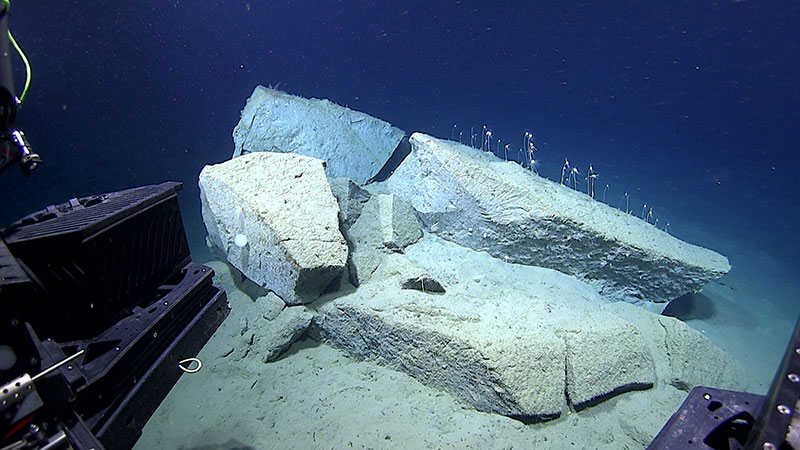

An example of one of the fractured, very angular boulders with fresh rock faces exposed seen during Dive 05 of the Seascape Alaska 3 expedition. The fractured fragments, which measured 0.5 to 1.5 meters (1.6 to 4.9 feet) in width, were likely once a single boulder that was more than 2 meters (7 feet) wide, but broke upon impact on the seafloor. A boulder field with numerous boulders was found at the base of a submarine landslide scarp. The rocks were covered in carnivorous sponges (Cladorhiza bathycrinoides), which on closer inspection appeared to have prey items stuck onto them.